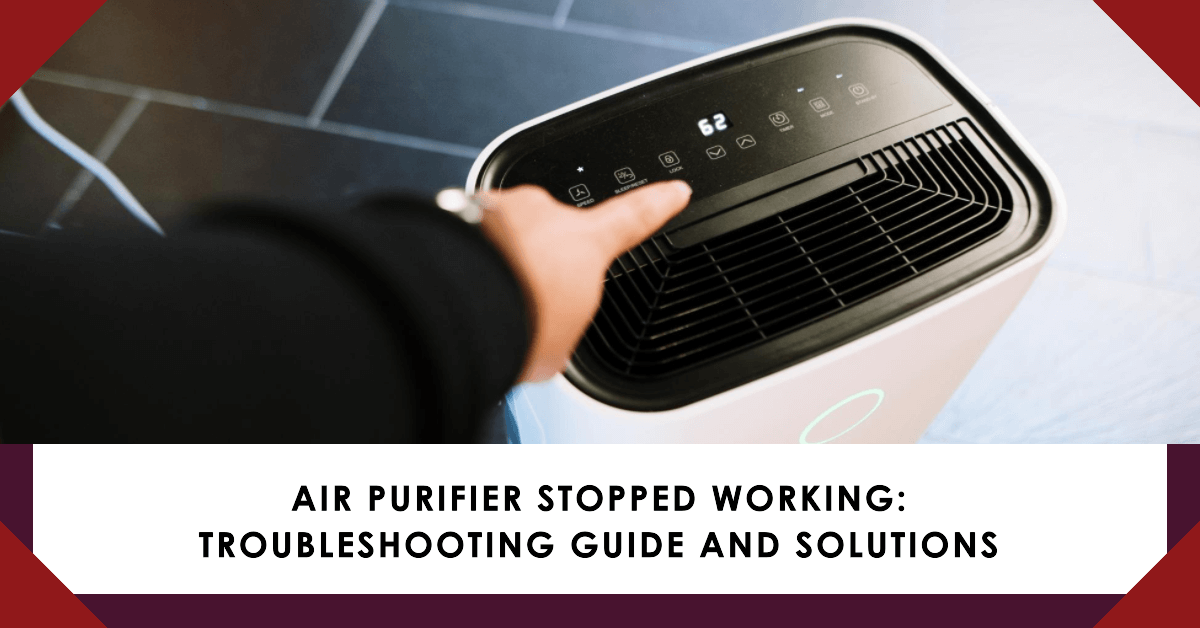When your Air Purifier Stops Working, it can leave you frustradted. Air purifiers help us to clean the indoor air they protect us from pollution. But as we use them it may happen that suddenly Air purifier stops working. If you have same problem then wait, we are here to help you without wasting yout time. We’ll quickly walk you through the common issues that cause this problem and the practical solutions to get it back on track.
We’ll try to resolve your issue related with “Air Purifier Stopped Working“.
Key Reasons for Air Purifier Not Turning On
- Power outlet issues: Check if the air purifier is properly plugged into a working outlet.
- Faulty power cord: Inspect the power cord for damage or loose connections.
- Tripped circuit breaker: Verify if the circuit breaker connected to the air purifier’s outlet has tripped.
- Dirty filters: Clogged filters may trigger automatic shut-off mechanisms to prevent damage.
- Overheating: Excessive use or blocked airflow can cause the unit to overheat and shut down.
- Malfunctioning control panel: Check if the control panel or buttons are unresponsive due to internal faults.
- Timer settings: Review timer settings to ensure the purifier hasn’t been programmed to turn off automatically.
- Safety features: Built-in safety features may trigger shutdown in case of sensor malfunctions or air quality issues.
- Remote control issues: If using a remote, check battery levels and ensure proper communication with the unit.
- Internal component failure: Mechanical or electrical failures within the purifier may prevent it from powering on.
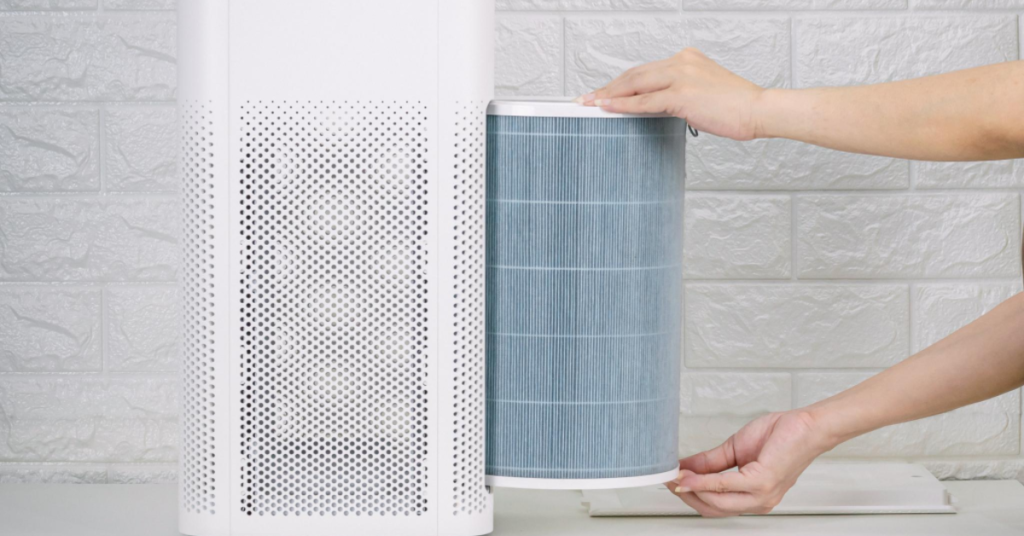
Understanding Your Air Purifier
How Air Purifiers Work
Air purifiers are provide cleaner air by removing contaminants from indoor spaces. They operate by drawing in air from the surrounding through a series of filters. These filters are designed to capture and trap various pollutants, such as dust, pollen, pet dander, mold spores, bacteria, and even some airborne viruses. The air purifier’s fan then circulates the purified air back into the room, creating a continuous cycle of clean air.
Key Components of an Air Purifier
The main parts of an air purifier typically include the fan, the filters, and the control panel. The fan is responsible for drawing air into the purifier, while the filters are designed to capture and remove pollutants, allergens, and other unwanted particles from the air. The control panel allows the user to adjust settings and monitor the purifier’s performance.
- Fan: The fan is responsible for circulating air through the purifier and filters.
- Filters: Filters are the heart of the air purifier, designed to capture particles and pollutants.
- Control Panel: The control panel allows you to adjust settings, such as fan speed and operating modes.
One of the most crucial components of an air purifier is the filter. Different types of filters serve specific purposes, such as capturing airborne particles, eliminating odors, or even destroying bacteria and viruses. HEPA filters, for instance, are highly efficient at trapping small particles like dust, pollen, pet dander, and mold spores. Activated carbon filters excel in absorbing unwanted odors and chemicals. Some air purifiers also utilize specialized filters, such as UV filters, to kill bacteria and viruses in the air. Regularly replacing the filters is essential for maintaining the air purifier’s effectiveness and ensuring optimal performance.

Troubleshooting Common Air Purifier Problems
Air purifiers are a great investment for maintaining clean and fresh air in your home or office. However, like any electronic device, they can experience some common problems. One common issue you may encounter is when your Air Purifier Stopped Working. This could be due to a faulty power cord or an issue with the power outlet. Make sure to check if the cord is securely connected and that the outlet is functioning properly. If the problem persists, it may be necessary to contact a professional for further assistance.
Air Purifier Not Working or Air Purifier Stopped Working
Issue: Your Air Purifier Stopped Working completely.
Possible Causes:
- Power Supply: Ensure that the purifier is correctly plugged in and that the power source is functional.
- Circuit Breaker: Check if the circuit breaker or fuse has tripped.
- Faulty Wiring: Examine the power cord for any visible damage.
Solutions:
- Verify the power source and inspect the cord for issues.
- Reset the circuit breaker or replace the fuse if necessary.
- If the power cord is damaged, replace it with a new one.
Despite their efficiency in purifying the air, air purifiers can sometimes experience technical issues or malfunctions that render them ineffective. One common problem is when the air purifier fails to turn on. If this occurs, the first step is to ensure that the power cord is securely plugged into both the device and the power outlet.
Also, check if the outlet is functioning properly by plugging in another electronic device. If the power source is working, examine the power switch on the air purifier itself. Make sure it is in the “on” position and not in standby or sleep mode. If the power switch appears to be functional and the air purifier still does not turn on, it may be necessary to contact the manufacturer or consult a professional technician for further assistance.
Another issue that can arise with air purifiers is when the fan stops working. The fan is responsible for drawing in and circulating the air through the purifier’s filters. If you notice a lack of air movement, first check if there are any obstructions around the air intake or exhaust vents. Dust, debris, or even pet hair can hinder the fan’s performance.
Clean the vents if necessary and ensure that the air purifier is placed in a location that allows sufficient airflow. Additionally, if the fan blades are dirty or clogged, gently clean them using a soft cloth or brush. If after these steps the fan still fails to operate, it may be best to consult the user manual. You can seek assistance from a professional technician to diagnose and fix the problem of Air Purifier Stopped Working.
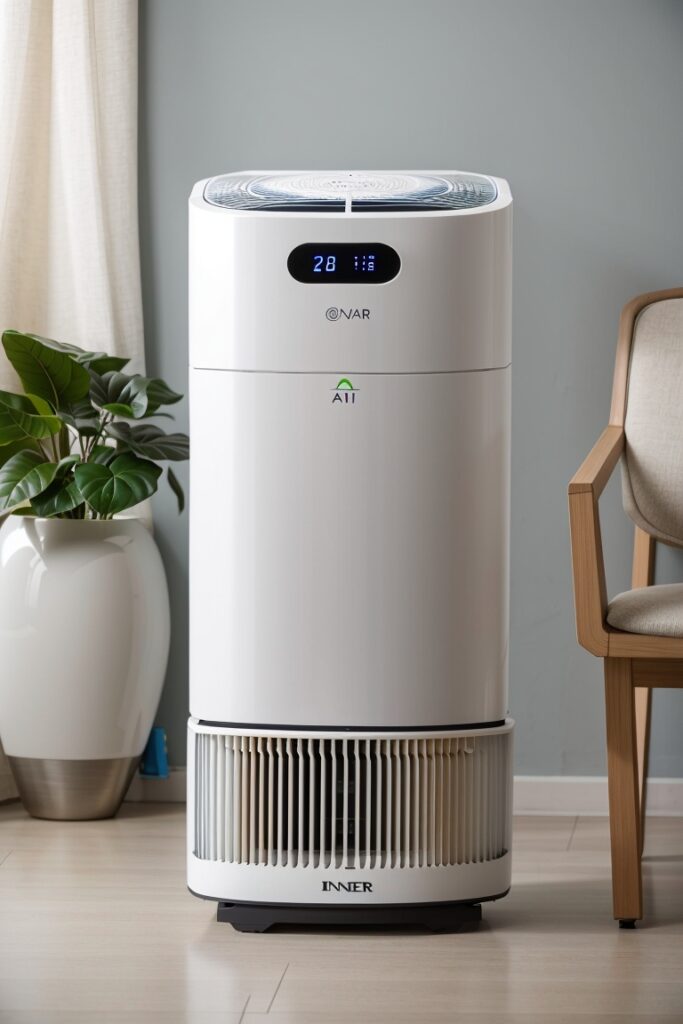
Air Purifier Not Turning On
Issue: Your air purifier doesn’t respond when you attempt to power it on.
Possible Causes:
- Control Panel Malfunction: The control panel might be unresponsive.
- Faulty Power Button: The power button itself may be damaged.
Solutions:
- Check if the control panel is locked or displaying any error messages. Consult the user manual for guidance.
- If the power button remains unresponsive, contact customer support for a replacement.
If your air purifier is not turning on, there could be a few possible causes. Firstly, check if the power cord is securely plugged into an outlet. Sometimes, the cord can come loose due to accidental movement or pets pulling on it. Make sure to firmly insert the plug into the outlet. Additionally, inspect the power cord itself for any visible damage such as frayed wires or cuts. If there are any signs of damage, it may be necessary to replace the cord to ensure safe operation.
Another factor to consider is whether the outlet itself is functioning properly. Try plugging in another electronic device to the same outlet to see if it receives power. If the outlet is not working, you may need to contact an electrician to resolve the issue. Additionally, check if the power switch on the air purifier is in the “on” position. It may seem obvious, but sometimes the switch can accidentally get turned off or bumped out of place. Simply flipping the switch to the “on” position may resolve the problem and get your air purifier working again.
Overall, troubleshooting a non-functioning air purifier that is not turning on involves checking the power cord, ensuring the outlet is functioning, and verifying that the power switch is in the proper position. By going through these steps, you can eliminate potential causes and hopefully resolve the issue without any further complications.
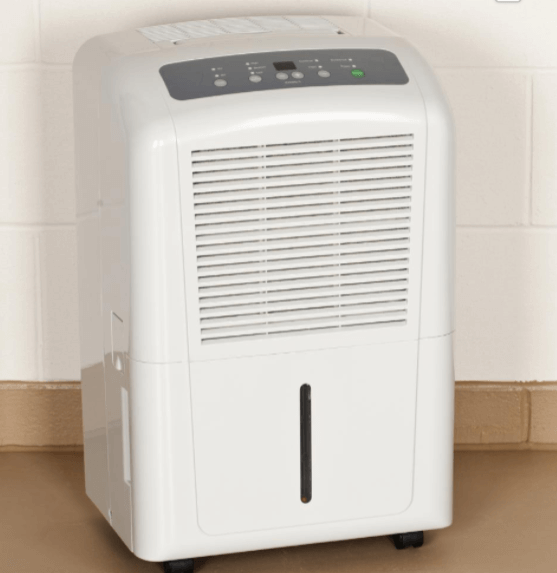
Air Purifier Fan Not Working
Issue: The fan inside your air purifier isn’t running as expected.
Possible Causes:
- Fan Obstruction: Debris or dust might be obstructing the fan blades.
- Motor Issues: The fan motor may be malfunctioning.
Solutions:
- Turn off the purifier and unplug it for safety.
- Carefully examine the fan for obstructions and remove any debris.
- If the fan still refuses to work, get in touch with the manufacturer’s customer support for further assistance.
The fan in an air purifier plays a crucial role in circulating the air and allowing it to pass through the filters for purification. However, if you find that the fan is not working as expected, there are a few possible reasons to consider. Firstly, check the power supply and ensure that the unit is properly plugged in. In some cases, a loose connection or a tripped circuit breaker can prevent the fan from turning on.
Additionally, it is worth inspecting the fan blades for any signs of obstruction or buildup of dust and debris. Over time, accumulation of dirt can hinder the fan’s performance. Clean the blades carefully using a soft brush or cloth to remove any blockage. If neither the power supply nor dirty blades seem to be the issue, it is possible that the fan motor itself may be faulty. In such situations, it is advisable to contact the manufacturer or a professional technician for further assistance in troubleshooting and resolving the problem.
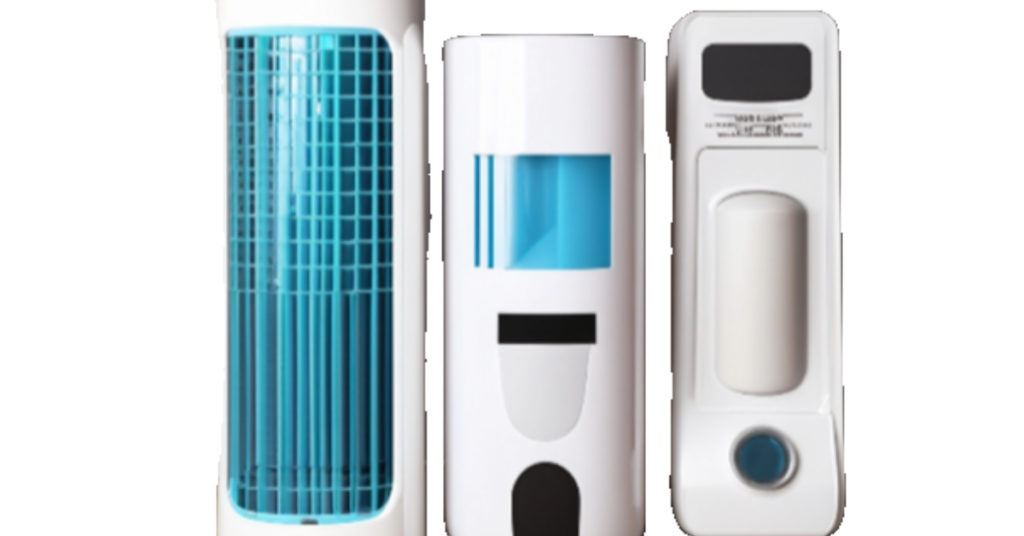
Air Filter Problems
Issue: You suspect that your air filter isn’t performing as it should.
Possible Causes:
- Clogged Filter: The filter might be clogged with particles, reducing airflow.
- Expired Filter: Filters have a limited lifespan, and using an expired one won’t be as effective.
Solutions:
- Consult the user manual for filter replacement guidelines.
- If the filter is clogged, follow the manufacturer’s instructions to clean or replace it.
Air purifiers are an effective tool for improving indoor air quality, but they are not without their own set of problems. One common issue that users may experience with their air purifiers is related to the air filter. Over time, air filters can become clogged with dust, allergens, and other airborne particles, reducing their effectiveness in purifying the air. It is important to regularly check and clean or replace the air filter in order to maintain optimal performance.
Neglecting to clean or replace a dirty air filter can lead to a variety of issues. Firstly, a clogged filter can impede airflow, resulting in reduced efficiency and weaker purification. This means that the air purifier may not be able to effectively remove pollutants from the air, leaving you breathing in potentially harmful particles. Additionally, a dirty air filter can put strain on the fan motor, causing it to work harder and potentially leading to premature wear and tear. To avoid these problems, be sure to follow the manufacturer’s recommendations for filter maintenance and replacement.
Strange Noises or Odors
Issue: Your air purifier is emitting unusual noises or strange odors.
Possible Causes:
- Dirty Filters: Accumulated dirt or particles can cause unusual noises.
- Overworked Motor: An overworked motor may produce odors.
Solutions:
- Check the filters for dirt and clean or replace them if needed.
- Ensure that the air purifier is not operating at maximum capacity for extended periods to prevent motor strain.
Strange Noises or Odors can often indicate underlying issues with your air purifier. If you notice strange noises coming from your air purifier, it could be a sign that there is a problem with the fan or motor. This could be due to a loose or damaged component that needs to be repaired or replaced. In some cases, the noise might simply be caused by debris or dust that has accumulated in the fan or motor, which can be easily remedied by cleaning the unit.
Similarly, unusual odors emanating from your air purifier may indicate a problem with the air filter. Over time, the air filter can become clogged with dust, allergens, and other airborne particles, which can result in a musty or unpleasant smell. In this case, it is important to check and replace the air filter regularly to ensure optimal performance of your air purifier. If the odor persists even after replacing the filter, it is recommended to consult the manufacturer or seek professional assistance to identify and resolve the issue.
Ineffective Purification
Issue: Your air purifier doesn’t seem to be effectively removing pollutants.
Possible Causes:
- Incorrect Placement: The purifier might not be positioned optimally.
- Filter Issues: Filters may require cleaning or replacement.
- Insufficient Coverage: The purifier may not be suitable for the room size.
Solutions:
- Ensure the purifier is centrally located with unobstructed airflow.
- Regularly clean or replace filters as recommended by the manufacturer.
- Consider upgrading to a more powerful air purifier if it’s not providing adequate coverage.
In some cases, air purifiers may not effectively purify the air as expected. This could be due to various reasons, such as the size of the air purifier in comparison to the area it is meant to clean. If the purifier is too small, it may struggle to effectively filter all the air in the room, leading to inadequate purification.
Additionally, improper maintenance of the air purifier can also result in ineffective purification. Regularly cleaning or replacing the filters is essential for optimal performance. If the filters become clogged or dirty, they may not be able to efficiently capture particles and pollutants from the air. Moreover, it is important to ensure that the air purifier is placed in an appropriate location, away from obstructions that may hinder the flow of air through the unit.
Unusual Readings or Alerts
Issue: Your air purifier is displaying unusual readings or error messages.
Possible Causes:
- Sensor Malfunction: Sensors responsible for detecting air quality may be malfunctioning.
Solutions:
- Refer to the user manual to interpret error messages.
- If it appears to be a sensor issue, contact the manufacturer’s customer support.
Other common reasons: Why Your Air Purifier stopped Working :
1. Clogged Filters
- Over time, the filters in your air purifier can get filled with dust and particles. When they’re clogged, they can’t capture more contaminants from the air, and your purifier becomes less efficient.
2. Neglecting Maintenance
- For your air purifier to work well, it needs regular care, just like a car or a pet. Skipping tasks like changing filters or cleaning the unit is like forgetting to feed your pet; it can’t perform its best without proper care.
3. Damaged Power Cord
- A damaged power cord is like a cut-off lifeline for your air purifier. If it’s broken or frayed, the purifier can’t get the electricity it needs to run.
4. Faulty Electrical Outlets
- Sometimes, the problem isn’t your air purifier; it’s the outlet it’s plugged into. If the outlet doesn’t work, it’s like trying to charge your phone with a dead battery – nothing happens.
5. Overheating
- Just like your computer or phone, an air purifier can overheat if it’s running too long without a break. When it gets too hot, it shuts down to avoid damage, like your phone turning off when it’s too hot to touch.
6. Motor Trouble
- Think of the motor in your air purifier as its heart. If it’s not working properly, your purifier can’t pump air effectively. It’s like having a weak heart; you need a doctor (or technician) to fix it.
7. Unresponsive Controls
- When the controls don’t respond, it’s like pressing the buttons on your TV remote, and nothing happens on the screen. Check for fresh batteries or dust on the control panel to fix this issue.
8. Controls Are Less Sensitive
- Controls that have become less sensitive can be frustrating. It’s like typing on a keyboard with sticky keys. Gently clean the control panel or use a remote if available to improve responsiveness.
Preventative Maintenance
Regular maintenance is essential to keep your air purifier functioning optimally and to prevent future issues like “Air Purifier Stopped Working”. Here are some tips:
- Cleaning: Regularly clean the exterior, control panel, and air intake grilles.
- Filter Replacement: Follow the manufacturer’s guidelines for filter replacement.
- Avoid Overworking: Refrain from running the purifier on maximum settings continuously, as it can strain the device.
Conclusion
By understanding the fundamentals of your air purifier’s operation and following the troubleshooting steps outlined here, you can effectively diagnose and resolve common issues like “Air Purifier Stopped Working”. Clean and fresh indoor air awaits you! If you encounter persistent problems or have additional questions, don’t hesitate to contact the manufacturer’s customer support for further assistance.
Frequently Asked Questions (FAQs)
Why has my air purifier stopped working?
Your air purifier may stop working due to various reasons, such as a clogged filter, power issues, or a malfunctioning component. To fix it, start by checking and cleaning the filter. If that doesn’t work, consult the manufacturer’s troubleshooting guide or consider professional help.
What is the lifespan of an air purifier?
The lifespan of an air purifier can vary, but with proper maintenance, they typically last between 5 to 10 years. Regularly changing filters and following the manufacturer’s guidelines can extend its life.
How do I know if my air purifier is broken?
If your air purifier is no longer effectively cleaning the air, makes unusual noises, or displays error messages, it might be broken. Check for obvious issues, clean the filter, and refer to the user manual for guidance.
Can an air purifier burn out?
Yes, an air purifier can burn out if it’s overused or subjected to excessive wear and tear. To prevent this, follow the recommended usage hours and maintain it regularly.
How often should you get a new air purifier?
You should consider getting a new air purifier if it’s no longer effective at cleaning the air or if it’s nearing the end of its lifespan, typically around 5 to 10 years. Regular maintenance can extend its usability.
Can you overuse an air purifier?
Overusing an air purifier might lead to excessive wear on the unit or higher energy costs. To prevent this, follow the manufacturer’s recommended usage hours and consider turning it off when air quality is satisfactory.
How many hours a day should an air purifier be on?
The recommended hours for running an air purifier can vary. In general, it’s advisable to run it continuously or at least when you’re indoors to maintain consistent air quality. Refer to the manufacturer’s instructions for specific guidance on your model.
How do I get my air purifier to work?
To get your air purifier to work:Plug it into a power source.
Ensure the filter is properly installed.
Turn it on using the control panel or remote.
Set the desired fan speed or mode if applicable.
Monitor the air quality and adjust settings as needed.
DheerajSonwane is a dedicated writer with expertise in air purification technologies. He focuses on providing well-researched content to help readers improve indoor air quality in homes and businesses. As the lead writer at AirPurifierMaster.com, Dheeraj offers practical advice his insightful reviews guide individuals in choosing the best air purifiers for their needs.

